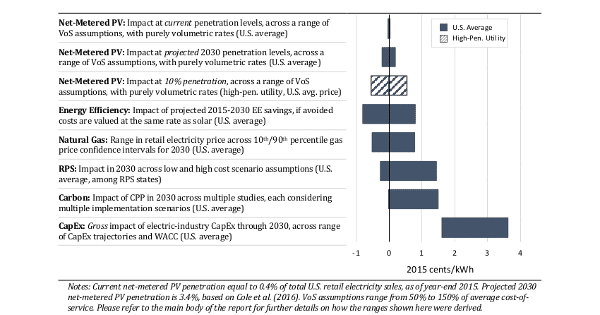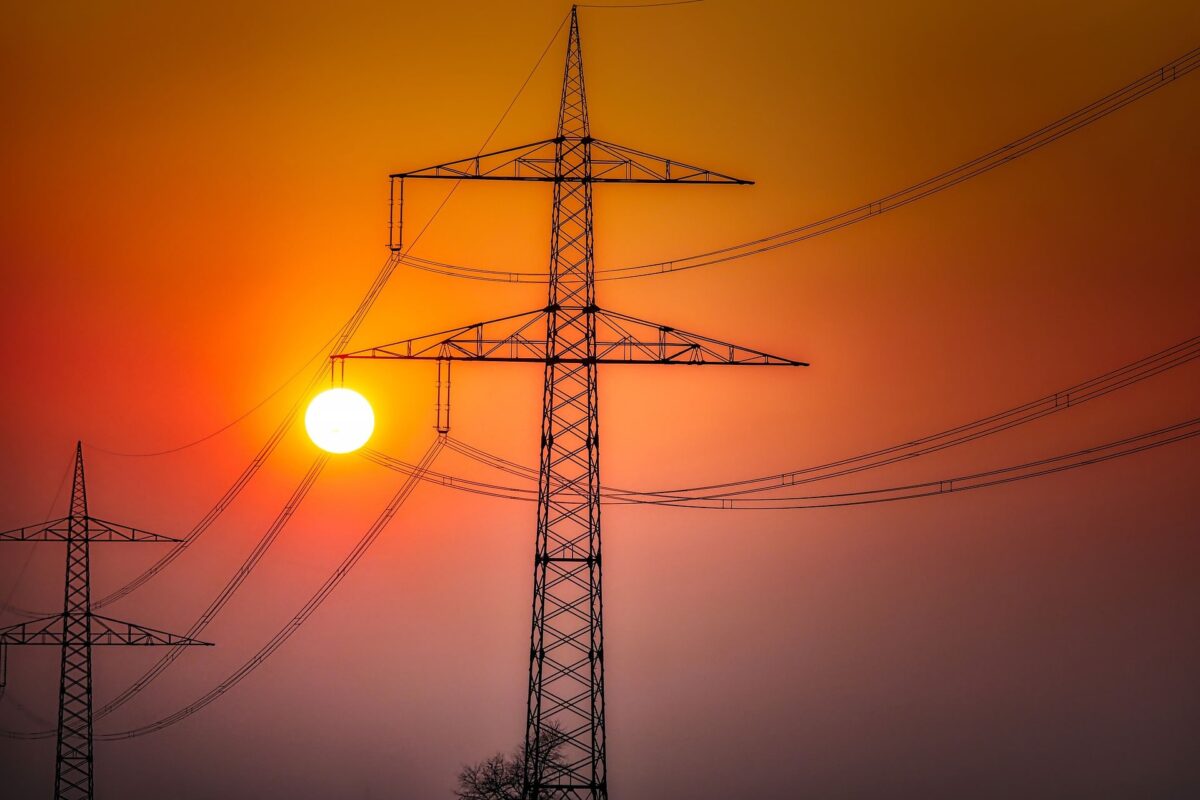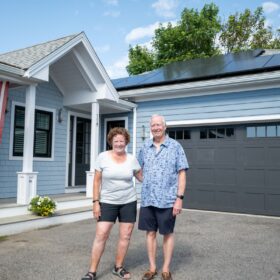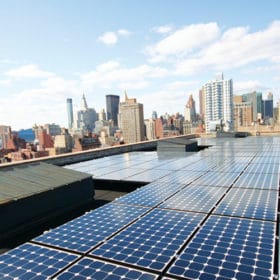The “cost shift” from solar system owners to other utility customers is one of the most widely propagated myths around PV. And despite this obfuscation being repeatedly disproven by many studies, it remains widely propagated by utilities and either poorly informed or outright captured politicians and regulators from Maine to Arizona.
Lawrence Berkeley National Lab (LBNL) has recently made its contribution to the debunking of this canard, but has taken another tack. Instead of looking at whether solar is imposing a cost shift on other customers, the national lab instead looks at the overall potential rate impact of distributed solar under a variety of valuations, and compares this to other rate impacts.
Putting the Potential Rate Impacts of Distributed Solar into Context finds that the excitement around this issue well exceeds any potential financial effect for other customers. “In most cases, the effects of distributed solar on retail electricity prices are, and will continue to be, quite small compared to many other issues,” reads the report’s conclusion.”
It is also important to note that Berkeley Lab’s report does not assume that distributed PV imposes costs on other ratepayers. At current national penetration levels, the report finds that distributed solar would bring no more than a .03 cent per kilowatt-hour ($0.0003/kWh) long-run increase in retail utility prices, but that the result could just as well be a decrease of the same magnitude.

Lawrence Berkeley National Lab
Likewise, even if distributed solar were to represent 10% of total electricity sales, well in advance of current 2030 projections, the impacts would be either a cost or a benefit of around half a U.S. cent per kilowatt-hour ($0.005/kWh). Meanwhile, energy efficiency measures are likely to have an impact of around $0.008/kWh, which could be a cost or a benefit.
It may be that utilities and disingenuous regulators would like to divert attention from other costs, like those involved in building new conventional power plants and un-needed infrastructure. “Among the issues explored in this paper, future electric-utility capital expenditures are expected to have, by far, the greatest impact on the trajectory or retail electricity prices,” finds the report.
LBNL puts this at a cost to ratepayers of anticipated utility capital expenditures at around 1.6-3.6 cents per kilowatt-hour ($0.016-0.036). Unlike solar, there is no scenario where this results in lower power prices for all customers.
The report does note that for states with particularly high penetration levels, retail price effects may be greater, but that this will depend upon the value of solar as well as rate structures. LBNL cites four utilities in Hawaii that have solar penetration levels around 10% of electricity sales, and warns that three other states are projected to reach this level by 2030.
This content is protected by copyright and may not be reused. If you want to cooperate with us and would like to reuse some of our content, please contact: editors@pv-magazine.com.








Thanks Berkeley, for debunking the myth!
Great article!
The sun is our greatest energy.